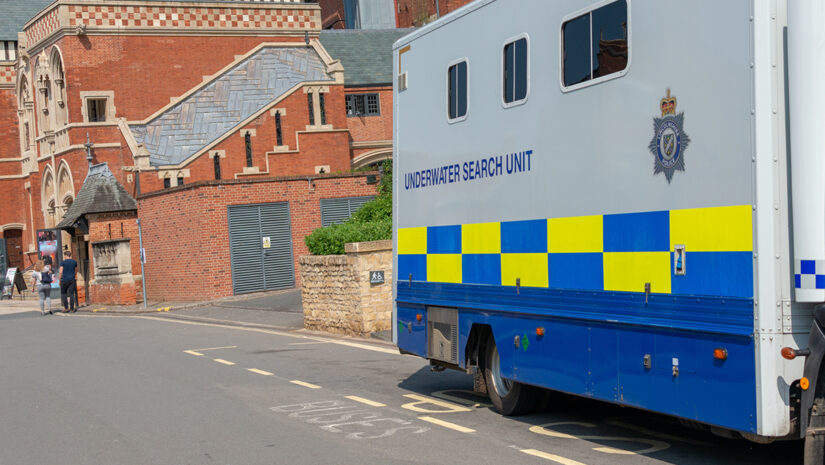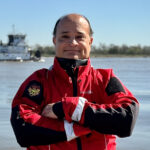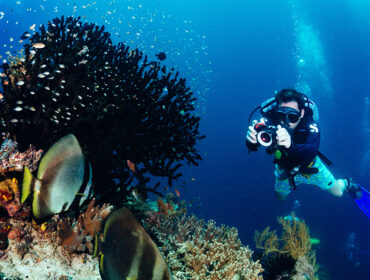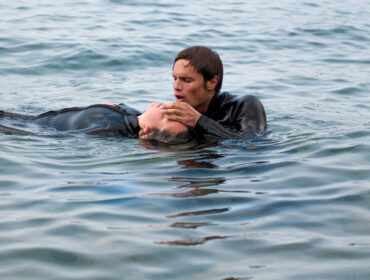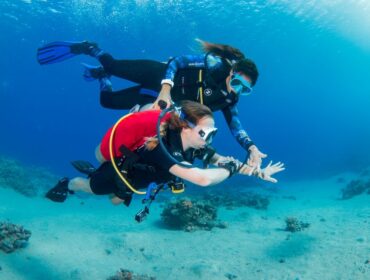“How can I secure evidence buried in silt? How will I navigate currents that threaten to scatter every clue, and preserve the forensic integrity of a submerged scene?”. Public safety divers often face uncertainty when a case goes beneath the waves. It’s these questions, rather than bravado, that guide our planning. These questions shape the techniques we rely on and inform every tool we choose as a team. All to ensure we conduct a careful, respectful underwater search. Underwater crime scene investigation (UCSI) is redefining forensic science. Equipped with specialized training, tools, and groundbreaking techniques, public safety divers and law enforcement officers have ventured into what was once thought to be inaccessible territory.
A Divers Alert Network article quotes Kevin Kemmerling: “Underwater crime scene investigation demands a blend of forensic science, diving expertise, and technological proficiency”. Join me in exploring the dynamic transformation of UCSI. This article addresses challenges and presents solutions that combine cutting-edge technology with human expertise.
Redefining Underwater Crime Scene Investigation
In addition to rigorous specialized training in diving, evidence preservation, and documentation, these investigators leverage advanced technology to enhance their operations. Tools such as remotely operated vehicles (ROVs), autonomous underwater vehicles (AUVs), and sonar technologies are employed to capture detailed images and data from hazardous or hard-to-reach locations, greatly expanding investigative capabilities. Techniques like meticulously bagging the head, hands, and feet of victims ensure that even trace evidence is preserved. Moreover, specialized units, such as the FBI’s Underwater Search and Evidence Response Team (USERT), embody this comprehensive approach, addressing both active cases and cold cases where evidence has been underwater for extended periods. Together, these measures underscore the indispensable role of public safety divers in transforming the challenges of contaminated or dangerous waters into opportunities for critical, life-saving investigation.
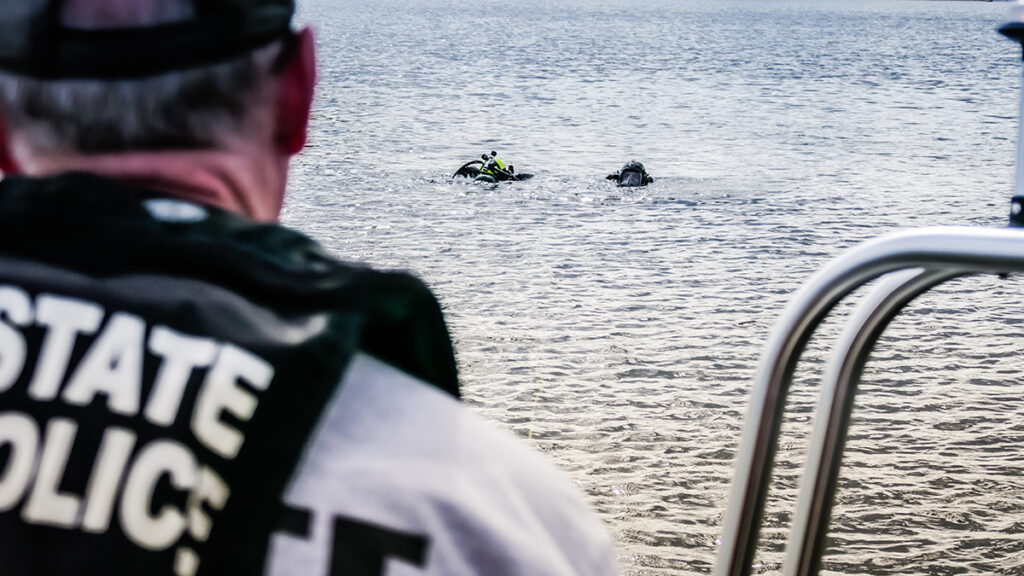
The Significance of Underwater Crime Scene Investigation
When a case takes us beneath the surface, I’ve learned that what lies hidden in the depths can make or break an investigation. Every piece of evidence—no matter how small—can become the thread that unravels a mystery.
Underwater work isn’t just about criminal investigations. Many of us have been there, whether it’s assisting with analyzing plane wreckage, boating accidents, or even potential explosive hazards. In each scenario, the principles remain the same: meticulous documentation, rigorous chain-of-custody procedures, and respect for the scene. By blending solid investigative practices with the unique skills of public safety diving, we ensure every clue is handled properly and every case has the best chance for resolution.
Expert Opinion:
“Underwater crime scenes always present a challenge for forensic researchers, as the destructive effect of water considerably complicates the chances of recovering material of evidential value,” says Castello et al., a leading forensic science professor.
Tools That Revolutionize Underwater Crime Scene Investigation
Enter the game-changing gear that transforms UCSI from a tedious task to high-precision forensic work. Cutting-edge tools like sonar systems, such as the previously mentioned, remotely operated vehicles (ROVs), and specialized underwater cameras are redefining how we approach submerged evidence retrieval.
1. Sonar Systems
Sonar allows underwater investigators to see what human eyes cannot. By sending sound waves to map underwater landscapes, sonar systems reveal objects buried in sediment or hidden under debris.
Specifically, modern sonar—especially imaging sonar—provides high-resolution, real-time views of underwater environments, even in murky conditions. This enhanced visibility not only enables quick and accurate target identification but also helps divers navigate complex terrains and avoid obstacles, ultimately improving the safety and efficiency of operations.
As a result, these devices reduce search times significantly, enabling quick assessments in low-visibility waters, which equates to less exposure to risk for our public safety divers.
Real-World Impact:
A sonar system was pivotal in finding a drowned victim’s body within hours, dramatically cutting search times.
2. Advanced Cameras
Modern underwater cameras deliver high-resolution images in grimy, low-light environments. These cameras document scenes comprehensively, preserving visual evidence crucial for presentation in court.
3. Specialized Diving Gear
Full-face masks, wetsuits, and robust buoyancy control scuba diving equipment keep public safety divers safe while allowing precision movements in complex underwater crime scenes.
4. Remotely Operated Underwater Vehicles (ROVs)
Similarly, ROVs have revolutionized the field by extending the reach of underwater investigations beyond what our public safety divers can safely manage. These robotic systems allow investigators to explore deep or dangerous areas remotely while collecting critical data and recovering evidence through built-in cameras and manipulators. Whether employed in search and rescue, forensic investigations, or scientific research, ROVs offer versatile applications that enhance operational capabilities while minimizing risk to human life.
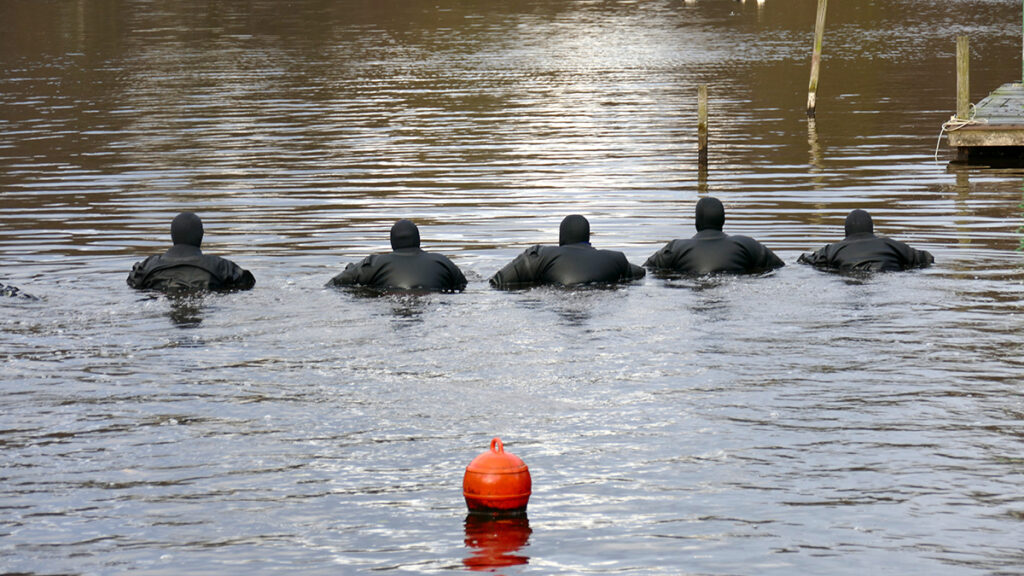
Techniques That Solve Submerged Mysteries
While technology provides powerful tools for UCSI, methodologies like grid searches, mapping, and evidence recovery techniques form the backbone of a successful underwater investigation.
1. Grid Searches
This systematic approach ensures no part of the scene is overlooked. Using overlapping search patterns increases the likelihood of uncovering hidden evidence.
2. Mapping for Precision
Mapping creates a visual representation of the crime scene’s layout, pinpointing the evidence’s exact location. This method ensures clarity throughout the investigation.
3. Evidence Recovery
Evidence recovery requires careful handling to avoid contamination. Techniques combine tried-and-true recovery strategies with geoforensic approaches that adapt to different underwater environments.
Expert Quote:
“A combination of the consideration of the environment, the target(s), and both modern and traditional search devices leads to a preliminary aqueous search strategy for forensic targets,” says Ruffell et al.,
Challenges & Solutions in Underwater Crime Scene Investigation
Despite revolutionary advancements, UCSI still faces significant hurdles. To overcome these obstacles, UCSI teams are adopting a multifaceted approach. High-resolution imaging sonar and next-generation ROVs with precision manipulator arms allow for safe, remote evidence retrieval from hazardous or deep sites, while basic public safety diving techniques and consistent training improve our safety and efficiency in poor-visibility scenarios. Rigorous, standardized training—aligned with NFPA 1006 and 1670 standards—ensures divers are proficient in advanced dive techniques, evidence handling, and emergency protocols. Comprehensive SOPs and chain-of-custody workflows, combined with coordinated NIMS/ICS frameworks, streamline interagency operations and preserve evidentiary integrity. Finally, regular joint exercises and dedicated funding for specialized equipment and research foster continuous improvement, turning today’s challenges into tomorrow’s strengths.
Limited Visibility
In environments where murk and darkness render human sight useless, high-resolution sonar and advanced imaging systems excel—painting a clear picture of the underwater terrain, pinpointing hidden objects, and guiding public safety divers safely through zero-visibility conditions. By converting sound waves into detailed visual maps, these technologies transform impenetrable water into a navigable workspace.
Environmental Hazards
Public safety divers master specialized training and strict precautionary protocols—ranging from current navigation techniques and thermal protection strategies to debris-management drills—so they remain safe and effective when contending with swift flows, abrupt temperature changes, and submerged obstacles.
Evidence Contamination
By rigorously following underwater forensic best practices—using sterile tools, protective scuba diving gear, and controlled decontamination workflows—investigators preserve the chain of custody and protect the probative value of even the most delicate submerged evidence.
Divers’ Safety
Cutting-edge protective scuba diving equipment and unmanned technologies—such as remotely operated vehicles (ROVs) and sonar—keep our public safety divers out of harm’s way by handling the riskiest tasks before a team member ever enters the water. Coupled with seamless collaboration between law enforcement, forensic dive specialists, and technical rescue teams, this partnership drives continuous innovation and expertise, ensuring that every procedure, from initial survey to final evidence recovery, prioritizes the well-being of the diver and the integrity of the mission.
Bridging Technology & Human Insight
Underwater crime scene investigation succeeds by marrying cutting-edge tools with seasoned diver expertise. High-resolution side-scan and imaging sonar quickly map vast or murky areas, pinpointing targets that human eyes cannot see. At the same time, highly trained public safety divers—armed with years of experience in navigation, evidence preservation, and environmental assessment—interpret sonar data, make real-time judgments, and execute meticulous recoveries. This seamless partnership between precision instrumentation and human skill ensures investigations are both efficient and deeply informed.
Expert Collaboration is Key:
“We work on FBI cases and support local law enforcement—they’ll work the details of the case and collect the intelligence. Once they know something’s in the water, they’ll contact us to come out and search. We’ll recover the evidence, and based on chain of custody, we’ll give that evidence to the case agent or local law enforcement. They’ll send the items to a lab for further examination,” asserts Brian Hudson – a Supervisory Special Agent who manages the FBI’s Underwater Search and Evidence Response Team (USERT).
Ready to take your investigations beneath the surface?
Dive into underwater forensics with hands-on training, cutting-edge scuba diving equipment, and expert insights that sharpen your skills and build your confidence. Start today—equip yourself with the tools and knowledge to uncover hidden evidence and lead the charge in underwater crime scene investigations.
Stay informed, stay protected, and stay ready.
References
Achterberg, Eric, Andresen, Christian, Beck, Aaron, Brenner, et al. (2024) Thematic assessment on Hazardous Submerged Objects in the Baltic Sea – Warfare Materials in the Baltic Sea. doi: https://core.ac.uk/download/613640702.pdf
Casella, John, Ferguson, Mike, Heaton, Vivienne, Hope, et al. (2025) The use of geoscience methods for aquatic forensic searches. doi: https://core.ac.uk/download/82897100.pdf
David Errickson, Mitchell S, Rachael M. Carew, Rajshekar M, Sun L (2020) An overview of 3D printing in forensic science: the tangible third-dimension. doi: https://core.ac.uk/download/323985538.pdf
Von Bleichert, Peter (2015) Port Security: The Terrorist Naval Mine/Underwater Improvised Explosive Device Threat. doi: https://core.ac.uk/download/147833229.pdf
https://dan.org/alert-diver/article/underwater-crime-scene-investigators
https://www.deeptrekker.com/news/sonar-for-search-and-recovery-rovs

